 Sarah White was my third great grandmother and I actually have a fair amount of information on her, despite the fact that it took me years of research to find anything beyond the bare basics.
Sarah White was my third great grandmother and I actually have a fair amount of information on her, despite the fact that it took me years of research to find anything beyond the bare basics.
Sarah was born around 1855, either in or around Sofala in Central West NSW. Today, Sofala is a tiny village that mainly caters to the tourist trade but in the 1850s it was a booming town thanks to the Gold Rush. According to her death certificate, Sarah’s parents were Thomas White and Bridget O’Neil. As I’ve never managed to find a birth certificate this is the best I’ve managed to find. I also don’t know how long Sarah and her parents remained in the Sofala area, but by 1868 Sarah had been admitted to the Newcastle Industrial School for Girls. Entrance records record that this was court ordered admission, with Sarah having been arrested by Coonabarabran Police, bit the crime that Sarah committed is not recorded.
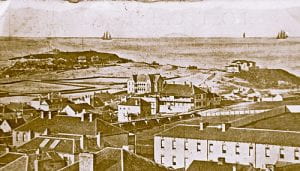
The Newcastle Industrial School (in centre) c.1870. [Courtesy of the Cultural Collections University of Newcastle (Australia)]
At the time of her admission, Sarah was aged 13 years old. In the Entrance Book, Sarah’s mother is listed as Bridget White but her father’s name is not recorded with it simply stating him as ‘Dead’. Sarah is described as being a Roman Catholic and being able to read the second book and write on a slate. I can only assume based on other entries that a variety of book of different levels are provided to the girls to test their reading level on entry to the industrial school, and their ability to read up to a certain number book indicated their level of reading proficiency. Sarah was in the Newcastle Industrial School until May 1871, when she was transferred to the Biloela school which was located on Cockatoo Island in Sydney Harbour. It was here that Sarah was deemed to be fit for domestic service but she was never assigned as she was released from the school on 9 January 1872 into the custody of her mother, Bridget, and her stepfather William Leather at Warialda, NSW. This release had been specifically requested by Sarah’s mother and stepfather.
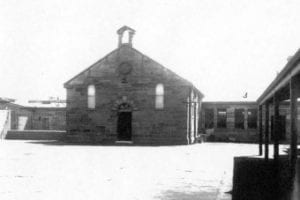
Exterior view of the Biloela Industrial School

The dormitory at Biloela, where the girls often sleep without any bedding
So, at the age of 17 Sarah was once more a part of the wider world. But she was not to remain with her parents for long, as she married William Henry Thompson in December 1872 at Inverell. Both parties list their residence as Yallaroi, which is located close to Warialda. It is interesting to note that no parent or age details appear on the marriage certificate, as Sarah would have legally required parental permission to marry as she was under the age of 21. We can assume that Sarah put her age up for the marriage, and was believed, because the marriage takes place. It’s also interesting that previous records confirm Sarah as being Roman Catholic yet she marries in the Presbyterian Church. Her husband was more than twice her age, being 36 at the time of their marriage.
Sarah and her husband went on to have at least nine children, but inconsistencies on her children’s birth records seem to indicate that there may have been more children who simply weren’t registered. Sarah and William moved around both NSW and Queensland, living variously in Yallaroi; Molong; Wattle Flat; Coonamble; Wallumbilla, Qld; Warwick, Qld; and Bingara NSW. It must have been hard for Sarah to move around so much, especially with children, but some descendants have indicated that quite a few of her children were left to other families to look after. This is based on oral histories that have been passed down within the families of other descendants. Bingara seems to be the place Sarah lived the longest during her married life, as she lived there for at least three years. Bingara was where her last two children were born and also where her husband William died at the age of 60 years old.

Sarah Thompson nee White
I’m not really sure what exactly happened to Sarah after the death of her husband, as there is no paper trail for this time. I can trace her children and the marriage and lives of those who survived into adulthood, but this doesn’t necessarily indicate Sarah’s location. For may years I could find no trace of Sarah after 1896, but in researching her children and their families I did eventually find a record of her on the 1930 Electoral Rolls for NSW which shows her living in Kankool with her daughter Lily’s family. However, on the 1936 Electoral Roll (which was the next one to follow the 1930 Roll) I could find no trace of her. I assumed that Sarah had probably died sometime in this time period so now that I had a time frame I could search for a death certificate.
The only problem was that I had no idea of Sarah’s parents names at this stage, and there was a total nine Sarah Thompson’s to die in NSW between 1930 and 1936. With no easy way to determine which record was for my Sarah, I had each entry checked and verified by a transcription agent to see if certain details matched those of my Sarah. Lucky for my patience, and my wallet, I found my Sarah was the fifth entry on the list. This confirmed Sarah had died 7 May 1934 at Glen Innes Hospital. It also confirmed Sarah’s birth place as Sofala, NSW and provided me with her parents names of Thomas White and Bridget O’Neil. The informant was her son-in-law, whose house she had previously been residing in, so obviously she had remained with the family.




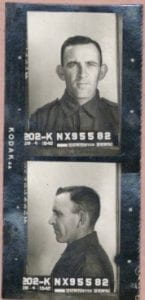



 U is for Eunice Iles. Technically, this name doesn’t always start with U but it definitely has the U sound and when I first came across the name in my research it was spelt as Unice but is also spelled Eunice. Both spellings are recognised as valid variations of the same name. It’s quite a nice sounding name and one I’m not familiar with the meaning of, so of course I had to google it. Eunice is actually a latinised version of the Greek name Eunike which translates to ‘good victory’. In English usage, the name really took off after the Protestant Reformation and became popular as it is a name found in the New Testament, with the bearer famed for being without hypocrisy. But what about my Eunice?
U is for Eunice Iles. Technically, this name doesn’t always start with U but it definitely has the U sound and when I first came across the name in my research it was spelt as Unice but is also spelled Eunice. Both spellings are recognised as valid variations of the same name. It’s quite a nice sounding name and one I’m not familiar with the meaning of, so of course I had to google it. Eunice is actually a latinised version of the Greek name Eunike which translates to ‘good victory’. In English usage, the name really took off after the Protestant Reformation and became popular as it is a name found in the New Testament, with the bearer famed for being without hypocrisy. But what about my Eunice?
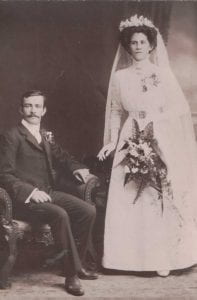
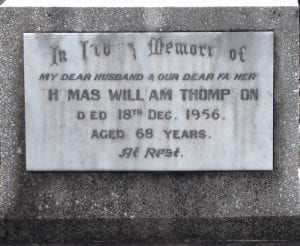
 Sarah White was my third great grandmother and I actually have a fair amount of information on her, despite the fact that it took me years of research to find anything beyond the bare basics.
Sarah White was my third great grandmother and I actually have a fair amount of information on her, despite the fact that it took me years of research to find anything beyond the bare basics.



 R is for Robert George Nichols, my 2nd great grandfather. Unlike some other ancestors of mine, Robert had a life in quite a few different places, moving around from place to place throughout his life.
R is for Robert George Nichols, my 2nd great grandfather. Unlike some other ancestors of mine, Robert had a life in quite a few different places, moving around from place to place throughout his life.

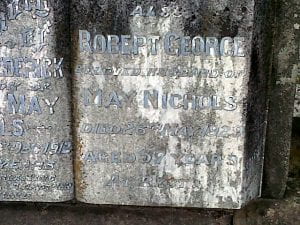
 My post for Q in the A to Z challenge has the theme of Queen City of the South. But where is that? It’s location is Goulburn, NSW. I first came across the term when doing some research lately on the history of Goulburn, as some ancestors of mine settled in the Goulburn area back in the 1800s. My google search turned up a lovely old publication entitled ‘Goulburn, Queen City of the South’ which was published in 1946. The publication is filled with some interesting photos and tidbits about the town of Goulburn, and it intrigued me as to where the Queen City of the South part came from.
My post for Q in the A to Z challenge has the theme of Queen City of the South. But where is that? It’s location is Goulburn, NSW. I first came across the term when doing some research lately on the history of Goulburn, as some ancestors of mine settled in the Goulburn area back in the 1800s. My google search turned up a lovely old publication entitled ‘Goulburn, Queen City of the South’ which was published in 1946. The publication is filled with some interesting photos and tidbits about the town of Goulburn, and it intrigued me as to where the Queen City of the South part came from.
 P is for Philadelphia Starr was my 5th great grandmother. I’ve always loved the sound of her name as it’s so different from your regular names like Ann or Jane or Sarah. Not that they aren’t good names, but Philadelphia just seems such an interesting name to have. When I first found Philadelphia, I was surprised and it seemed such an uncommon name to me. After all, the only time I’d heard it before was in reference to the city in the USA. Upon digging further though, the name Philadelphia was apparently wildly popular across the entire East Sussex area starting in the mid 1500s right through to the mid 1800s. My relatives apparently enjoyed this popular name as there are many, many Philadelphia Starr’s in the region of East Sussex in which my Philadelphia lived.
P is for Philadelphia Starr was my 5th great grandmother. I’ve always loved the sound of her name as it’s so different from your regular names like Ann or Jane or Sarah. Not that they aren’t good names, but Philadelphia just seems such an interesting name to have. When I first found Philadelphia, I was surprised and it seemed such an uncommon name to me. After all, the only time I’d heard it before was in reference to the city in the USA. Upon digging further though, the name Philadelphia was apparently wildly popular across the entire East Sussex area starting in the mid 1500s right through to the mid 1800s. My relatives apparently enjoyed this popular name as there are many, many Philadelphia Starr’s in the region of East Sussex in which my Philadelphia lived.

 Oscar Norman Thompson was my great grandfather and is the subject of today’s A to Z post. Oscar was born 25 May 1895 at Regentville, near Penrith NSW to parents Charles John Thompson and Alice Skeen. Oscar’s mother had a mammoth 13 pregnancies, with a total of 15 children born including two sets of twins. Out of these 15 children, 9 lived into adulthood. Oscar was the seventh child born, so petty much smack dab in the middle of his family. Oscar grew up in various suburbs of Penrith, but by 1915 the family were settled in the suburb of Jamisontown.
Oscar Norman Thompson was my great grandfather and is the subject of today’s A to Z post. Oscar was born 25 May 1895 at Regentville, near Penrith NSW to parents Charles John Thompson and Alice Skeen. Oscar’s mother had a mammoth 13 pregnancies, with a total of 15 children born including two sets of twins. Out of these 15 children, 9 lived into adulthood. Oscar was the seventh child born, so petty much smack dab in the middle of his family. Oscar grew up in various suburbs of Penrith, but by 1915 the family were settled in the suburb of Jamisontown.



 A bit of a departure from the first names with this post, but for the letter N I have chosen to write about the surname Nichols.
A bit of a departure from the first names with this post, but for the letter N I have chosen to write about the surname Nichols. Mary Martin was my fifth great grandmother, and was the earliest of all my ancestors to arrive in Australia.
Mary Martin was my fifth great grandmother, and was the earliest of all my ancestors to arrive in Australia. At the time of her death in 1847, Mary was a resident of the Pitt Town area in the Hawkesbury region of New South Wales. Mary was 74 years old when she died, and undoubtedly had a better quality of life in the new colony of New South Wales than she would have if she had remained in London. Mary is buried somewhere in the St. Matthew’s Anglican churchyard in Windosr, NSW in an unknown grave.
At the time of her death in 1847, Mary was a resident of the Pitt Town area in the Hawkesbury region of New South Wales. Mary was 74 years old when she died, and undoubtedly had a better quality of life in the new colony of New South Wales than she would have if she had remained in London. Mary is buried somewhere in the St. Matthew’s Anglican churchyard in Windosr, NSW in an unknown grave.